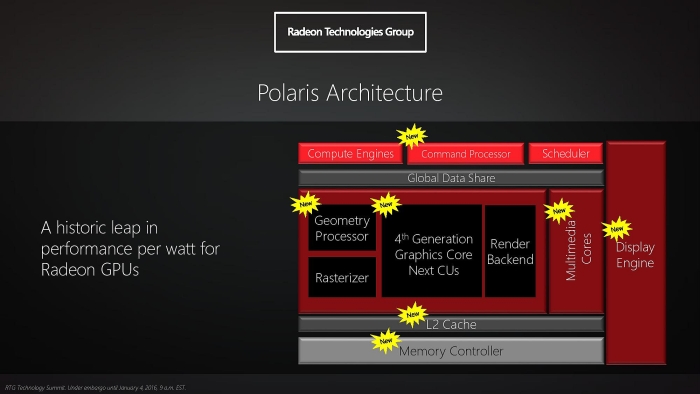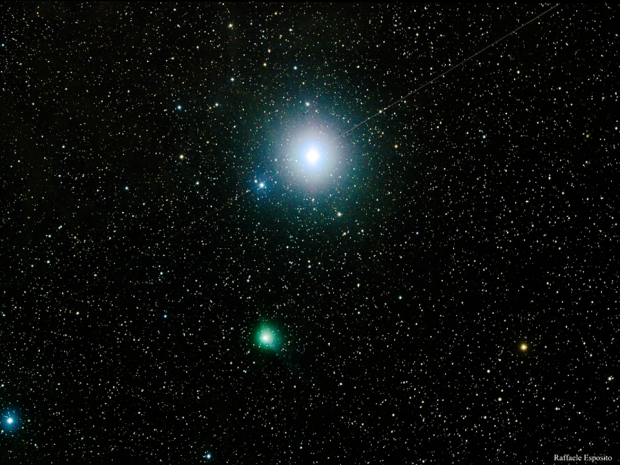Starting in 2016, the company will travel a new, much brighter and expansive exploratory naming landscape, and future AMD GPU architectures will now be given astronomical code names after stars and constellations (and, hopefully, astronomical performance as a byproduct).
The company has been using “island” codenames ever since its TeraScale family series of microarchitectures. This was AMD’s second GPU architecture series using a unified shader model and competed with Nvidia’s Tesla and first-generation Fermi lineups. The first AMD GPU lineup in the TeraScale 3 family was “Northern Islands,” or the 40nm Radeon HD 6000 Series, which launched in October 2010.
Following the move from TeraScale came the company’s current Graphics Core Next (GCN) compute architecture. AMD continued with its naming scheme here for the first GCN 1.0 family called “Southern Islands,” or the 28nm Radeon HD 7000 Series, which first launched in December 2011. The list goes on with the GCN 1.1 family mostly called “Sea Islands,” with the Radeon HD 8000 Series (January 2013) and Rx 200 Series (October 2013). Next is the third-generation GCN 1.2 family called “Volcanic Islands” and “Caribbean Islands,” or the Rx 300 Series, which launched in June 2015.
AMD promises that its upcoming fourth-generation GCN 2.0 family will be the last of its dealing with volcanic land masses and the beginning of its foray into stars. The next family was formerly called “Arctic Islands,” but has recently been renamed “Polaris” after the North Star, the brightest star in the constellation Ursa Minor and the 50th brightest star in the night sky.
Speaking with VentureBeat on Friday, Raja Koduri had the following to say:
"Our guiding principle for the Polaris architecture was power efficiency. We have the new naming scheme for our architectures. It’ll be based on galaxies, star systems, and stars. You’ll see more of this coming in the future. Polaris is the beginning of our journey through space."
The company did, however, give us a small hint at its upcoming “journey into space” project with the Radeon Mobility HD 8000 Series back in 2013, codenamed “Solar System” (see: “Sun” Pro/XT/XTX, “Mars” XT/XTX/LP/Pro, “Venus” LE/Pro/XT/XTX, “Saturn” Pro/XT and “Neptune” XT/XTX).
SciTechDaily.com - Vega in the night sky
WCCFTech is claiming that AMD’s 14nm FinFET-based “Greenland” enthusiast flagship chip – the successor to 28nm Fiji – has been internally known by the company for quite some time as “Vega10.” According to scientific observation data, Vega is the brightest star in the constellation Lyra and is the fifth brightest star in the night sky. The star is so valuable to astronomers that it has frequently served as the baseline for calibrating the photometric brightness scale (the intensity of a space object’s electromagnetic radiation). Vega was also the northern pole star around 12,000 BC and was the first star other than the Sun to be photographed and have its spectrum recorded.
Raja also explained that the company has two versions of its new 14nm FinFET GPUs ready to launch by the middle of 2016.
Source: AMD
“Both are extremely power efficient. This is Polaris 10 and that’s Polaris 11. In terms of what we’ve done at the high level, it’s our most revolutionary jump in performance so far. We’ve redesigned many blocks in our cores. We’ve redesigned the main processor, a new geometry processor, a completely new fourth-generation Graphics Core Next with a very high increase in performance. We have new multimedia cores, a new display engine.”
AMD’s Polaris family officially marks the beginning of the company’s journey into the great vastness of space. As Andy Weir, author of The Martian says, “Astronauts are inherently insane. And really noble.” Perhaps the same can be said for ambitious GPU architects in the next couple years to come.




